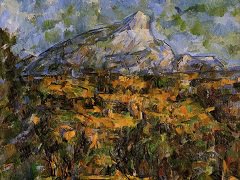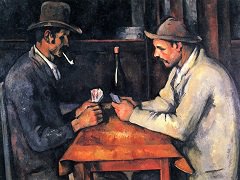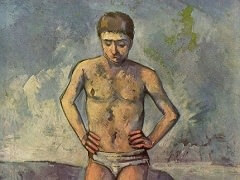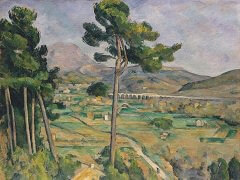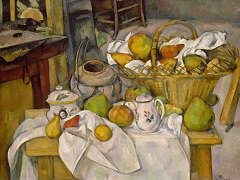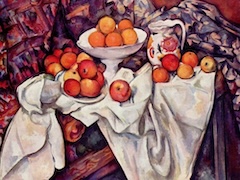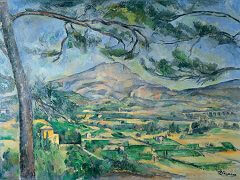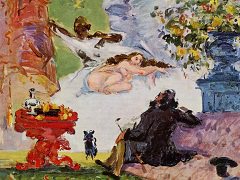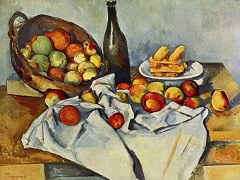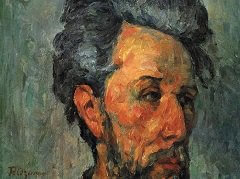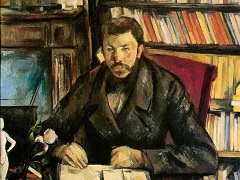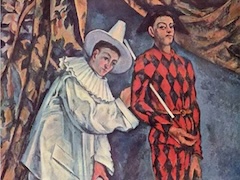Portrait of Victor Chocquet, Seated, 1877 - by Paul Cezanne
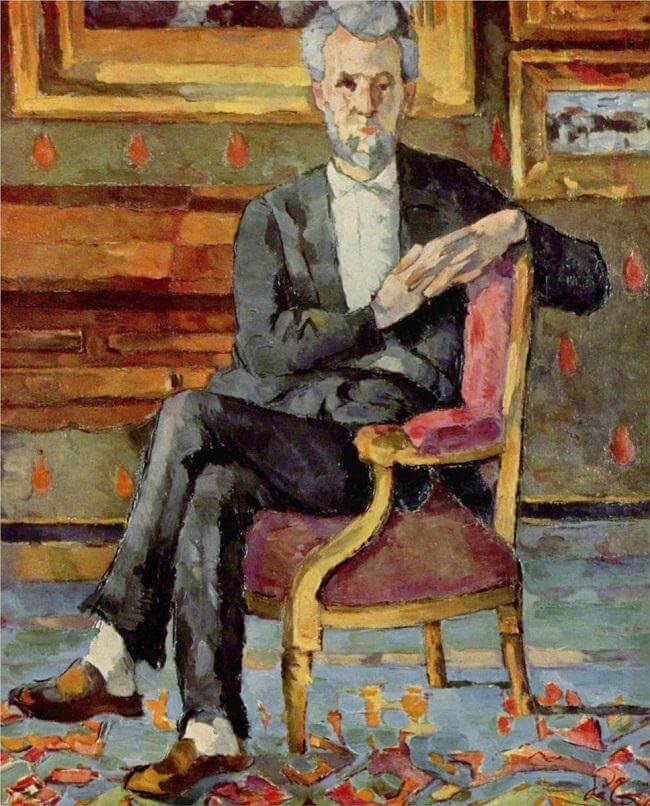
The little sketch of Chocquet at home among his pictures, although not a searching portrait, is perhaps truer to the man, for something of his mildness and savoring, receptive attitude comes out.
It is painted in an original way, a further step in Cezanne's striving for a constructed form. The whole is a banding and fitting of mainly horizontal and vertical strips of rich color, like a section of mosaic or a patchwork rug. The treatment of the interlocked hands is a good example of Cezanne's idea. The texture of the pigment is more pronounced than the texture of the represented objects, and the painted pattern is clearer than the structure of things. We are aware of the colored marquetry of the desk before we recognize the desk itself. It is hard to know exactly the large form of the desk or to determine where floor and wall meet. No object is complete and several are obscure; everything is cut somewhere and in a unique way, even the figure which is intercepted by the chair and the upper canvas edge. In the foreground the pattern of an actual rug - as part of the world of represented things - is broken up and quite impossible to read. At the same time we observe surprising contacts or continuities of things that lie in different planes in depth: among others are the verticals of the back of the chair and the picture frame above, and the horizontal cast shadows joining the rear legs of the chair and the vertical canvas edge. The figure, too, is divided into strips like the objects around it; and these strips or their edges continue the n eighboring forms. Still another device, which weakens the depth in favor of the painted surface, is the peculiar meeting and crossing in one point - at Chocquet's left wrist - of the lines from five different planes. The color, too, is applied in this sense; observe how very similar bright touches of yellow, red, and light grey occur in clear groupings on objects in far separated planes. Complementary to these devices is the contrary discontinuity of lines that belong to the same plane; the dark band at the lower edge of the wall is on different levels at left and right - a deliberate blurring of the right angle between wall and floor (the angle is also obscured by the similarity of tones above and below the band.
The principle is clear: to break up what lies in one plane; to unite on the picture surface what lies at different depths. Through all these means and through the texture of the painting, the latter has become almost as distinct an object as any of the things it represents.


